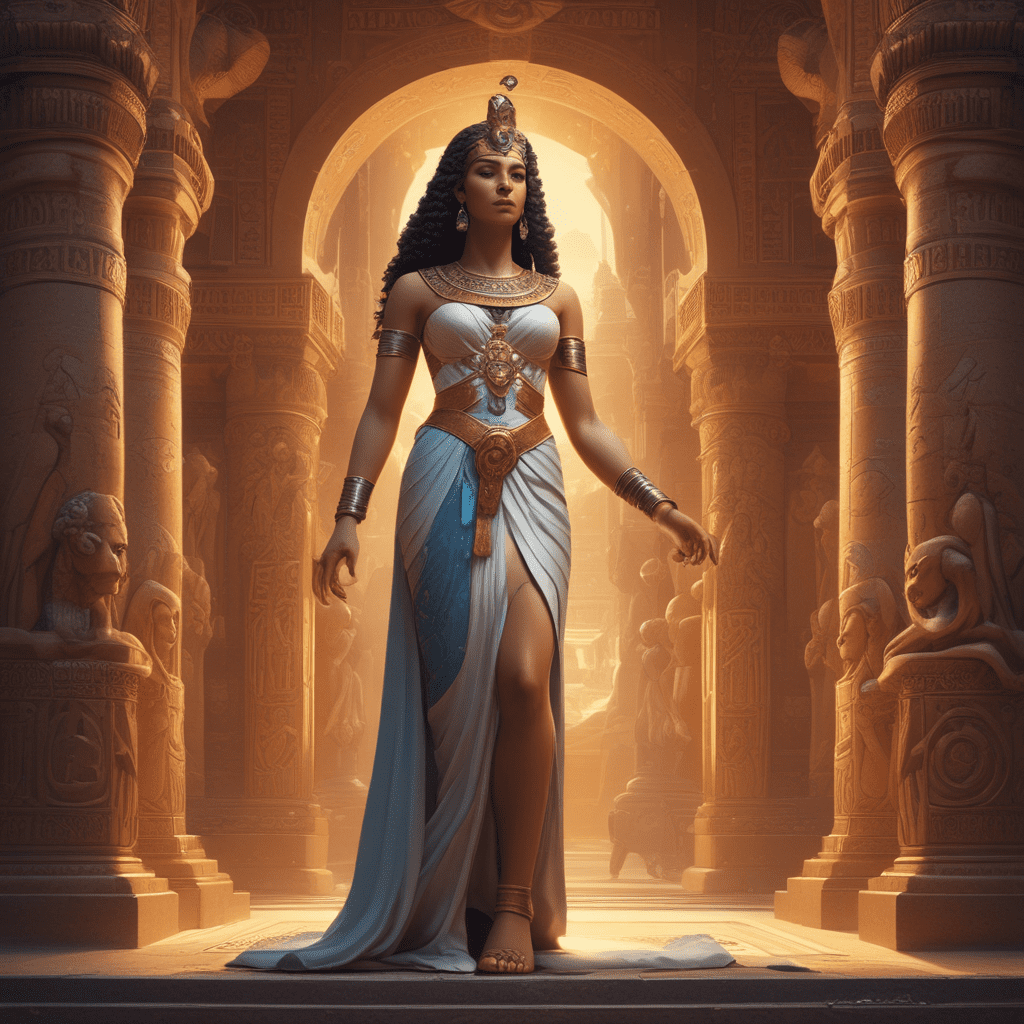The Myth of the Goddess Meret in Ancient Egypt
Introduction to Goddess Meret
In the rich tapestry of Ancient Egyptian mythology, the goddess Meret holds a significant place. Also known as Mert, Meret was considered a goddess of song, dance, and rejoicing. She was often depicted as a beautiful woman wearing a headdress adorned with the symbol of a cobra, representing her connection to royalty and protection.
Origin of Goddess Meret
Ancient Egyptian mythology portrays Meret as a divine being associated with joy, music, and festivities. She was believed to be the personification of jubilation and celebration in the afterlife, accompanying the deceased on their journey to the realm of Osiris, the god of the afterlife and the dead. Meret’s presence was thought to bring comfort and festivity to the spirits making their way through the underworld.
Role and Symbolism of Meret
Meret was often depicted in ancient Egyptian art and hieroglyphics as a graceful woman with outstretched wings or as a falcon. Her role extended beyond the afterlife, as she was also seen as a protector of the living, especially in matters of music, dance, and artistic expression. Worship of Meret was believed to bring joy and merriment to ceremonies and gatherings, fostering a sense of harmony and enjoyment among the community.
Legacy of Meret in Egyptian Culture
The myth of Meret serves as a testament to the importance of music, dance, and celebration in Ancient Egyptian society. Through her representation as a goddess of joy and festivity, Meret highlights the cultural significance placed on communal gatherings and artistic expression. Today, the legacy of Meret resonates in the continued appreciation for music and dance as integral parts of human expression and connection.
By exploring the myth of the goddess Meret in Ancient Egypt, we gain insight into the value placed on joy and celebration in one of the world’s most captivating ancient civilizations. As we reflect on Meret’s role as a symbol of jubilation and protection, we can appreciate the enduring relevance of her myths in understanding the cultural ethos of the past.
FAQ About the Myth of the Goddess Meret in Ancient Egypt
Who was the Goddess Meret in Ancient Egyptian mythology?
In Ancient Egypt, Meret, also known as Meretseger, was a goddess associated with the Theban Necropolis. She was revered as the protector of tombs and the desert lands around the Valley of the Kings.
What was the significance of the Goddess Meret?
Meret was believed to oversee the necropolis, ensuring the protection of the deceased and their resting places. She was also associated with fertility and rebirth, playing a vital role in the journey to the afterlife for the deceased.
What symbols were associated with the Goddess Meret?
Meret was often depicted as a cobra or snake, symbolizing her protective and deadly nature. She was also shown wearing a headdress with a scorpion on top, emphasizing her role as a guardian against malevolent forces.
How was the Goddess Meret worshipped in Ancient Egypt?
Devotees would offer prayers and offerings to Meret at shrines within the necropolis. It was believed that by honoring her, individuals could receive her protection and blessings, particularly in matters concerning the afterlife and fertility.
Is there a specific myth or legend involving the Goddess Meret?
While there isn’t a singular myth solely dedicated to Meret
